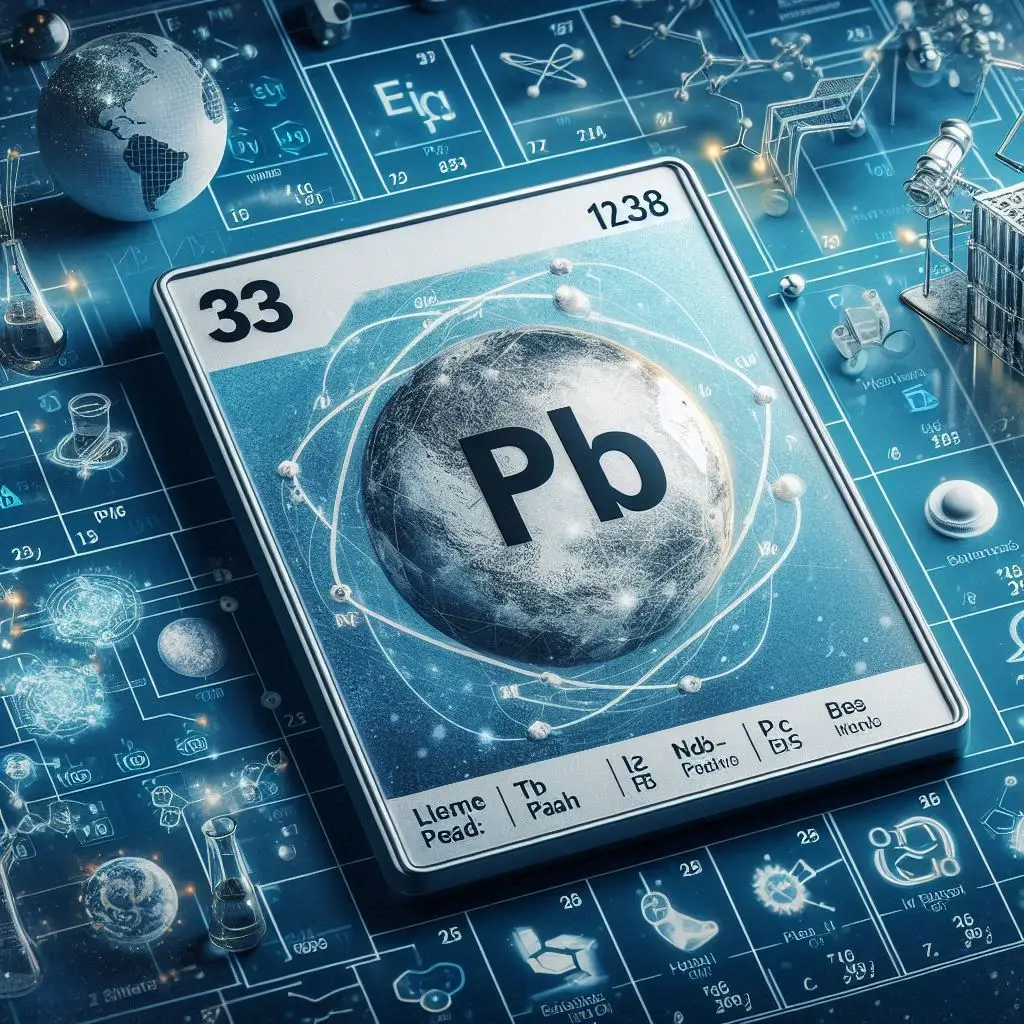
Pb Element Name Card Periodic Table Symbol
Introduction
This article, Pb Element Name Card Periodic Table Symbol, explores the fundamental aspects of the Pb element, including its name, card, representation in the periodic table, and its chemical symbol. Understanding these components provides valuable insight into lead's properties and applications in various fields, including chemistry, industry, and environmental science. The Pb element is not only important in theoretical contexts but also has practical implications in everyday life, such as in batteries, radiation shielding, and plumbing materials.
The Pb element name card periodic table symbol refers to the essential details about lead (Pb), a heavy metal known for its density and toxicity.
Pb Element
The Pb element is lead, a chemical element with the atomic number 82. This element is categorized as a post-transition metal in group 14 of the periodic table. Lead is a dense, soft, and malleable metal that appears bluish-white when freshly cut, but it dulls to a gray color upon exposure to air. It has been known since ancient times, and utilized for various purposes, including pipes, weights, and as a pigment in paints.
Lead's properties make it a unique element in the periodic table. It has a melting point of 327.5 °C (621.5 °F), which is considered relatively low, and a boiling point of 1749 °C (3180 °F). Its density is notably high at 11.34 g/cm³, which contributes to its effective use in applications requiring weight and stability. However, lead is also infamous for its toxicity; prolonged exposure can lead to serious health issues, including neurological damage, especially in children. Understanding the Pb element involves not only its physical and chemical characteristics but also its implications for health and safety in various industries.
Pb Element Name
The Pb element name refers specifically to "lead." The name derives from the Old English word "lead," which has been used for centuries to denote this metal. In various languages, lead retains similar names: for instance, "plomb" in French and "plomo" in Spanish. The etymology reflects its historical significance, as lead has been utilized since antiquity, particularly in Roman times, where it was used for plumbing and as a material in coins.
The chemical symbol for lead is Pb, which is derived from the Latin term "plumbum." This historical connection emphasizes the longstanding importance of lead in human civilization. As an element, lead has played a significant role in advancements in technology, industry, and medicine. Understanding the Pb element name not only helps in recognizing the substance itself but also highlights its cultural and historical relevance throughout the ages.
Pb Element Card
The Pb element card serves as a compact representation of essential information regarding lead. Element cards, commonly found in educational settings, provide quick access to the key attributes of an element. For lead, the element card would include the following details:
- Element Name: Lead
- Symbol: Pb
- Atomic Number: 82
- Atomic Weight: Approximately 207.2 u
- Group: 14
- Period: 6
- Block: p-block
- Density: 11.34 g/cm³
- Melting Point: 327.5 °C
- Boiling Point: 1749 °C
The Pb element card is essential for students and professionals in chemistry and related fields, as it encapsulates crucial information that aids in identifying lead's characteristics and behavior. By referring to this card, one can quickly grasp the fundamental aspects of lead, facilitating further study or practical applications. This succinct format is particularly beneficial in laboratory settings and educational environments where quick reference is often needed.
Pb Element Periodic Table
The Pb element periodic table refers to lead's placement within the periodic table of elements. As mentioned earlier, lead is located in group 14, period 6, and is classified as a post-transition metal. Its position reflects its properties and behavior, especially in relation to other elements in the same group, such as carbon (C), silicon (Si), germanium (Ge), and tin (Sn).
In the periodic table, elements are organized based on their atomic numbers, electron configurations, and recurring chemical properties. Lead’s unique characteristics can be attributed to its electron configuration of [Xe] 4f¹⁴ 5d¹⁰ 6s² 6p², which indicates its ability to form various oxidation states, primarily +2 and +4. Understanding the Pb element periodic table helps chemists predict lead's reactions with other elements, its stability, and its potential compounds. This positioning emphasizes lead's relevance in both theoretical chemistry and practical applications, highlighting its significance in various chemical processes.
Pb Element Symbol
The Pb element symbol is the two-letter abbreviation for lead, which stands for its Latin name, "plumbum." Chemical symbols are essential in chemistry, providing a universal language for scientists across the globe. The symbol Pb is widely recognized in chemical equations, literature, and during laboratory experiments.
Understanding the Pb element symbol is crucial for anyone studying chemistry, as it simplifies communication about this element. For instance, in chemical reactions, lead may be represented as Pb, allowing scientists to convey complex information succinctly. Moreover, the symbol's historical roots emphasize the rich legacy of lead as a significant element throughout human history. The importance of chemical symbols, such as Pb, lies not only in their functional use in scientific discourse but also in their ability to connect contemporary science with its historical context.
Conclusion
The Pb element name card periodic table symbol encapsulates the essential characteristics of lead, including its name, symbol, properties, and significance in the periodic table. Understanding the Pb element is crucial for students, chemists, and professionals alike, as it reveals the unique attributes of this metal and its impact on various fields. From its historical significance as a material used since ancient times to its modern applications in technology and industry, lead remains a vital element. The Pb element's representation in the periodic table and its corresponding symbol serve as important tools for communication and understanding within the scientific community. As we continue to explore the complexities of elements like lead, it becomes increasingly clear how essential they are to our understanding of the natural world and their implications for our future.

